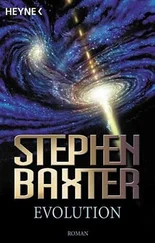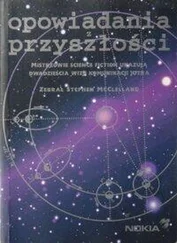“Don’t be. The work is helping.”
“Oh, is it?” Through some fancy projection-software interpolation her VR was made to look as if it were peering at the same diagrams I was. “Just sit tight a minute,” she said sternly. “I’ll check over what you’ve done. The state you’re in you’ll probably screw the whole thing.”
“Thanks for your support.”
“I mean it,” she said. No doubt she did. She frowned, focusing on the schematics, and I sat back and waited.
So a kid who had once watched space shuttles launching from his backyard had ended up designing a real-life spaceship, after a fashion. It had been a long journey, though.
My primary ambition, as a small kid, had been to fly in space myself. But as I grew older it quickly became apparent that that would never be possible. Not only were the only manned space missions on the cards endless round-the-block tours on the Space Station, for which there was a whole queue of candidate astronauts lined up before I reached age twelve, but I soon learned that my personal spacesuit, my body, wasn’t up to the task of taking me off the planet.
So my ambitions downscaled a bit. If I couldn’t fly myself, maybe I could be involved in designing the next generation of ships. But even that got compromised.
I majored in math and engineering at college. But when I graduated in 2017, it was quickly apparent that there was no work to be had in designing spaceships. There were only a few proof-of-concept projects sponsored by NASA, ESA, and the other space agencies. But even this was playing; there was no serious money in it. This was not a time for flying into space: it was an age of entropy, when the oil was running out and energy running down, and our attentions were increasingly absorbed by the need to cope with the Warming, and other hazards of the Earthbound future.
But I was an engineer. I wanted to work on something that would get built — and, incidentally, that would pay; I had no ambitions to be poor. So I looked for opportunities.
What was coming up at the time was a new generation of nuclear power plants. Whatever its drawbacks, nuclear power had become fashionable again, as it was not a source of carbon dioxide emissions — and as a source of energy, a lot less problematical than chasing down the world’s remaining oil supplies.
So I went into nuclear engineering. I spent eight years working on a plant that eventually opened in 2027.
It was what we called a fifth-generation design. The core worked at nearly a thousand degrees, a temperature that would have signaled the start of a meltdown in early generations of reactors. Those high temperatures offered much greater efficiency, but to achieve them we had to go through an immense program of research and development, for instance in ultra-hard materials that were resistant to intense heat and neutron bombardment. We actually cooled the thing with a huge vat of molten lead; I learned a great deal about refrigeration principles on that project, principles I applied later to the Kuiper Probe.
When our meltdown-proof, terrorism-proof plant came online and started to feed its first watts into the grid, we were very proud of what we’d achieved. Super-safe and super-clean, we used to say. We even won the economic argument, even though the costs of our competitors, at the time renewables like solar and wind power, were tumbling. That New York station is still operating today, even though its economic justification has gone away a little.
I was thirty-two years old. I was married to Morag, and we had a son, Tom. We were very happy. I didn’t realize it at the time, but I guess that was in some ways the peak of my life. I would never have believed that things would fall apart so quickly.
My work suffered first. I admit I didn’t see the Higgs revolution coming — but then, few others did.
Higgs technology came out of cosmology. The physics of the early universe was exotic. In our era some particles, such as the quarks that make up protons and neutrons, are massive, while photons, particles of light, are massless. It is an elusive critter called the Higgs field that gives objects mass. But when the universe was less than a millionth of a millionth of a second old, and it was still hotter than a certain crucial temperature of a thousand trillion degrees, the Higgs field couldn’t settle. Every particle was massless. The universe was filled with them, flashing across unraveling spacetime at lightspeed. But when the universe expanded and cooled the Higgs field condensed out, like a frost settling on blades of grass. Suddenly everything changed.
And when the Higgs field condensed it released a flood of energy, cosmos-wide. It is just as water freezing to frost must release heat energy: it was a phase transition, as the cosmologists say. And that vast injection of energy powered the universe into a surge of “inflation” that dramatically accelerated its expansion. All this is cosmology; it can be seen written in the relics in the sky — the remnant background Big Bang radiation, the gravity waves that slosh back and forth — a story deciphered when I was a boy.
What changed our world was the development in the 2020s of a new breed of particle accelerator so powerful it was able to emulate, in tiny spaces and brief instants, the tremendous energy density and temperature of the early universe — hot enough, in fact, to drive out the Higgs field from a bit of matter.
And when the Higgs was allowed to recondense, it released a flood of energy — vastly more than the energy input, under the right conditions. If that sounds like something for nothing, it isn’t: it is just as in a fission bomb the relatively small energy of conventional explosives is used to liberate the much greater energies locked up in atomic nuclei.
As soon as control of the Higgs field was achieved, even on a small experimental scale, its potential was obvious. Here was an energy source of much greater density than anything we’d dreamed possible before — and we could tap it, tap an energy that had once driven the expansion of the universe itself. It was even as safe as you could wish, far safer even than our new-generation nukes.
When you try to predict technological trends, it’s easy to follow straight lines. For instance computer power, measured in operations per buck, has been doubling every couple of years since long before I was born, and has continued to follow that trend, more or less, ever since. Maybe you could have foreseen some of the consequences: a world in which a machine equivalent of human-level intelligence has long been passed, a world in which artificial self-awareness has become a commodity, and a part of everyone’s life. What’s much harder to predict is what comes out of nowhere, out of left field. I was still a kid when the great orbital astronomical observatories confirmed the universe’s biography from the Big Bang to the present. And out of that great cosmological revolution has come a new power source for cars and planes and cities — and, maybe, starships. Who’d have thought it?
Not me, that was for sure. In the late 2020s, as I followed these sudden developments in the technical literature, I was alarmed.
In terms of my career, it needn’t have mattered, maybe. We had only just brought that New York station online, and others of the same design were sprouting around the Great Lakes, and in Nevada and California. There is an asset inertia with big technology; you can’t throw away your whole infrastructure just because somebody somewhere has a bright idea.
But the fact was, somebody had had that bright idea.
A new long-term national energy strategy began to emerge, born out of existing trends, notably the painful weaning of America off of oil, and the possibilities opened up by Higgs. “Generation distribution” was the catchphrase. Every block, every home, would be a source of energy, from photovoltaic cells, rooftop wind turbines, maybe even biofuel crops in the backyard. And everybody would be connected into a local microgrid, from which you would draw energy when you needed it, store energy in hydrogen fuel cells in your basement, and even sell power back when you had a surplus. The microgrids would be connected up to larger regional, national, and international grids, supported by key nodes that would, in the first phase, by existing-technology power stations, including old hydrocarbon-burners and our new nukes, but these would be phased out as soon as they paid off their development costs, and replaced by Higgs generators.
Читать дальше












